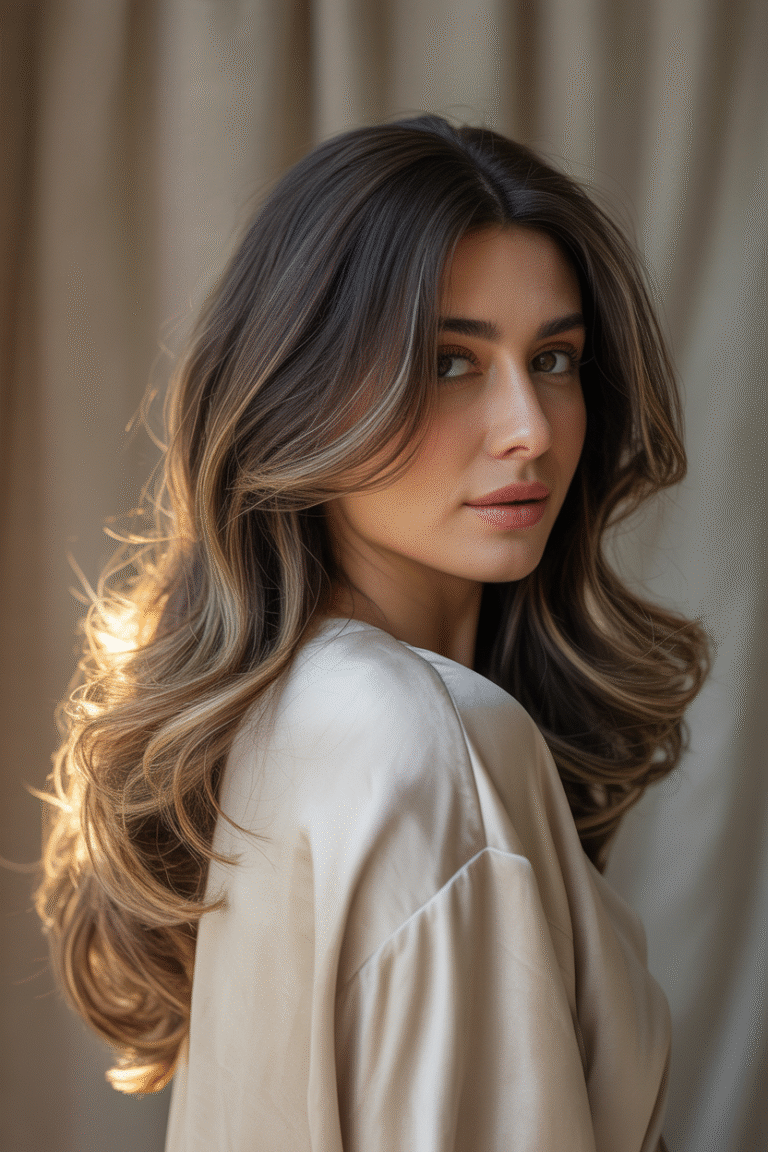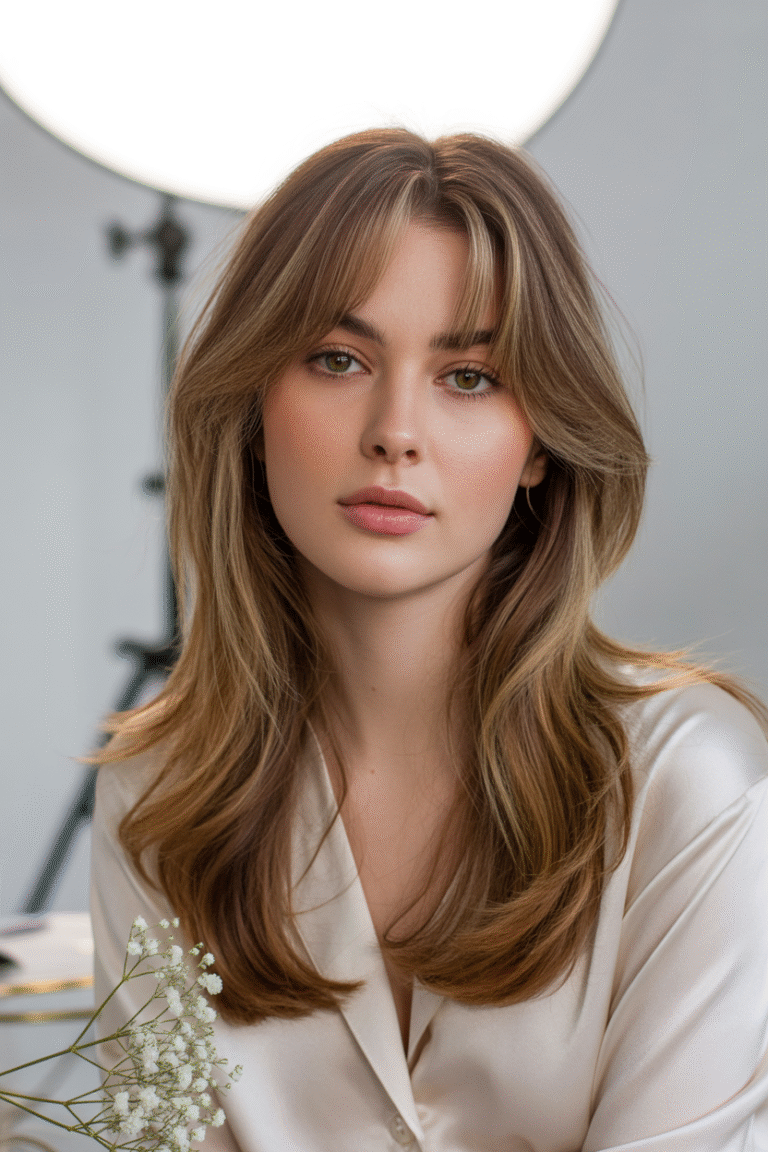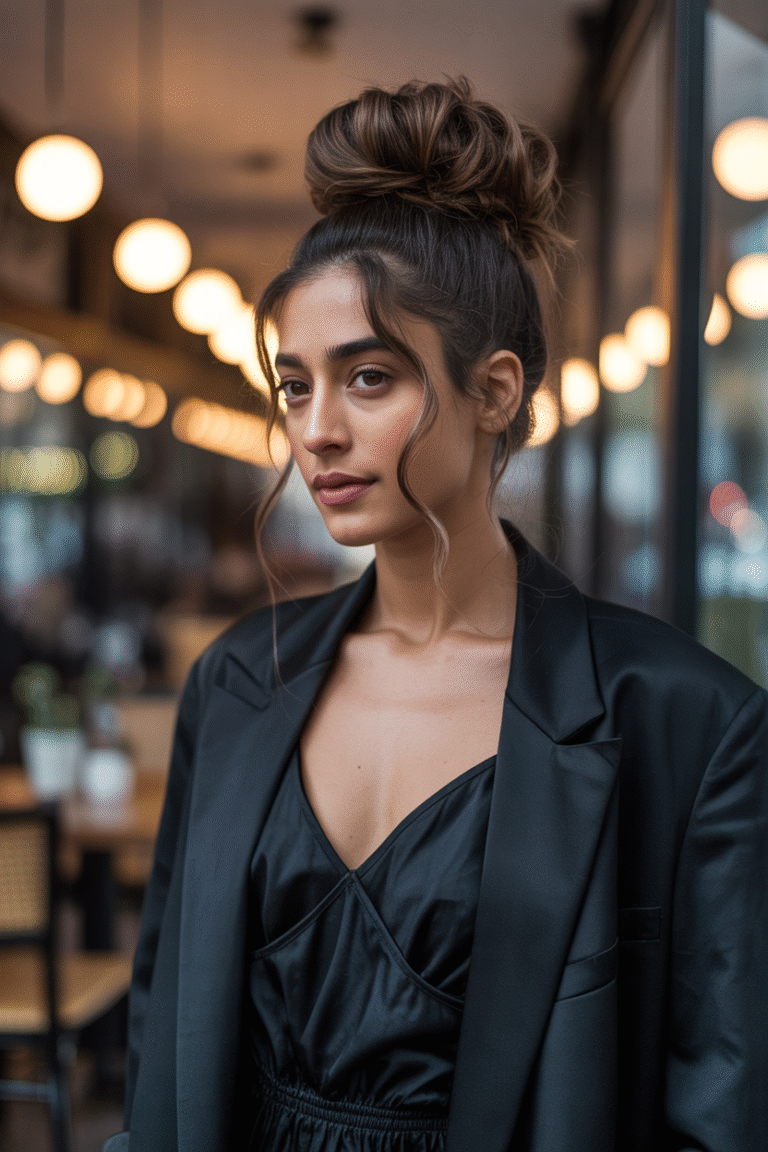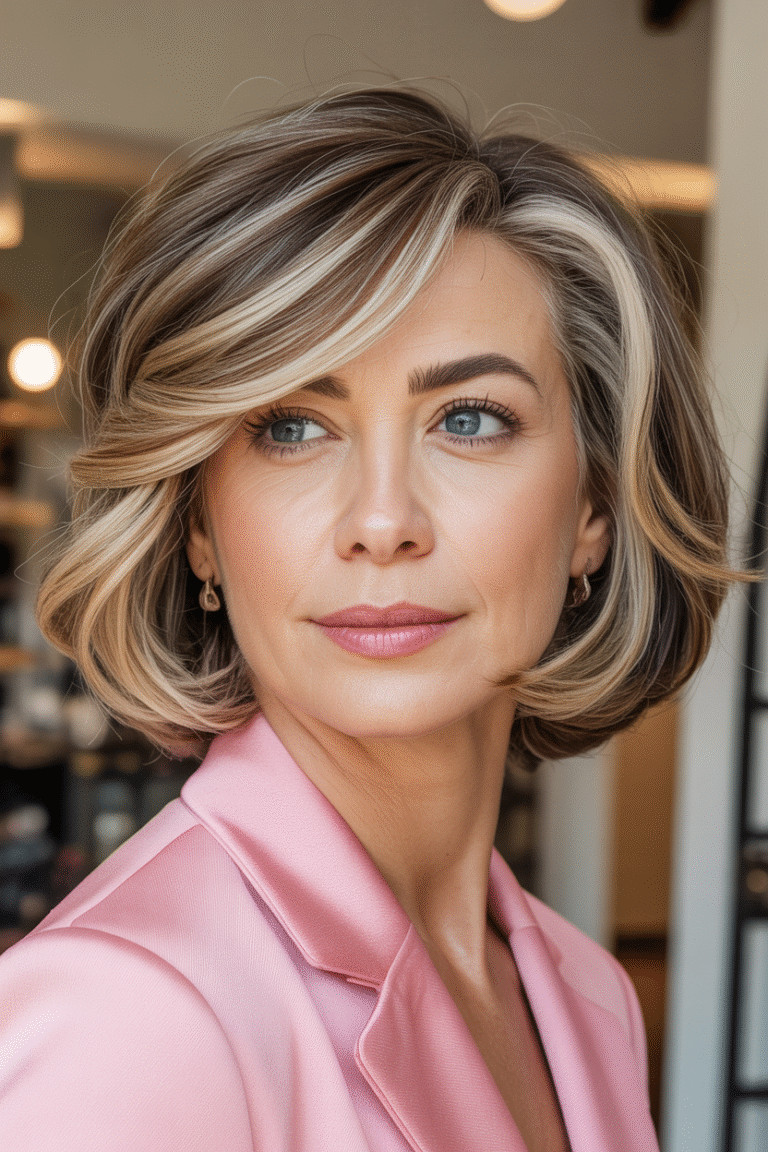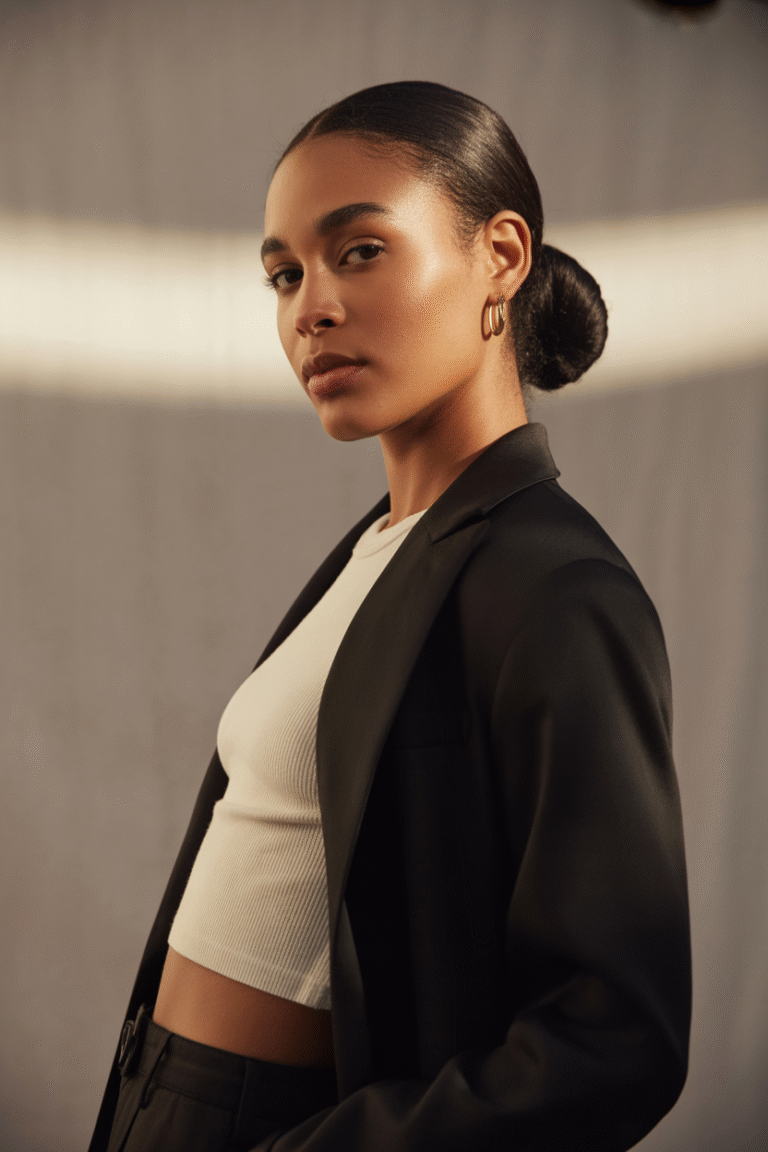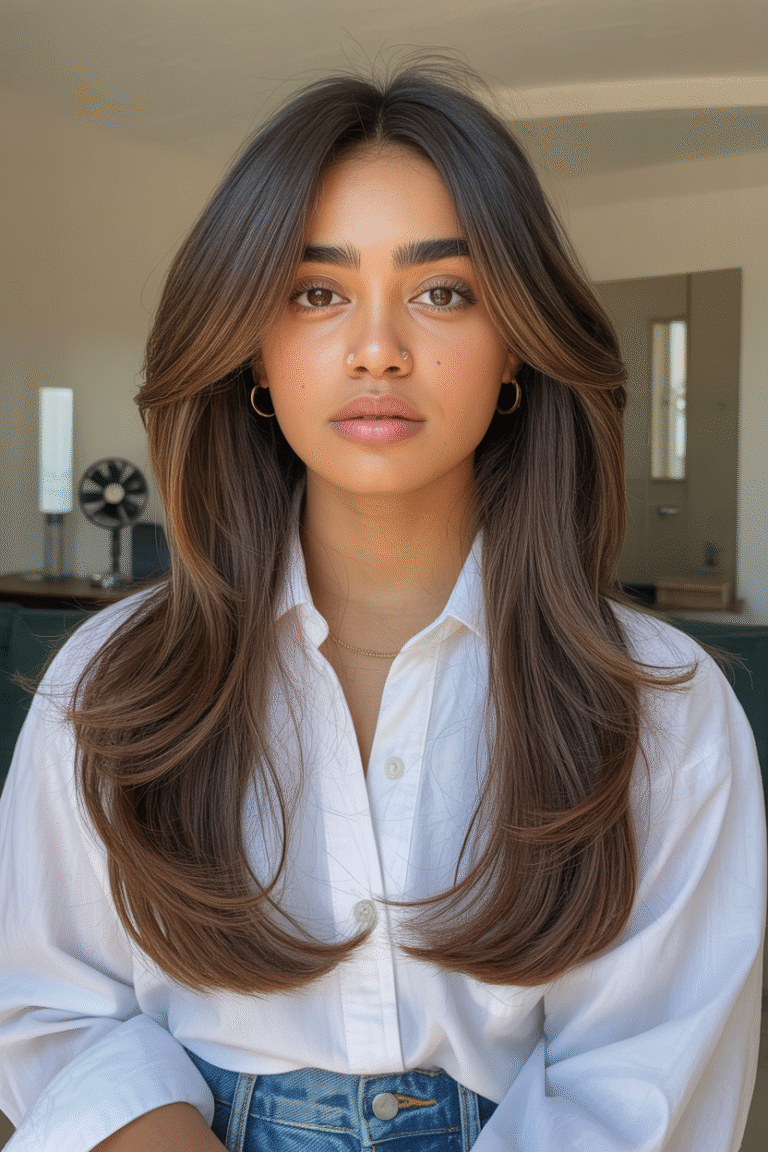15 Face Framing Curtain Bangs That Are Total Game-Changers

Last spring, I trimmed a soft curtain fringe on a client “just to test it.” She walked out with lifted cheekbones, brighter eyes, and a lighter feel around the face. The change was small, yet the effect felt big. So let’s do the same for you. This guide covers 15 Face Framing Curtain Bangs styles, who they fit best, how to style them fast, and how to keep them healthy.
Face framing curtain bangs are a center-parted fringe with longer, blended pieces that sweep away from the face. They suit most face shapes because the lengths sit near the cheekbones or jaw, which softens angles and adds balance. They work on fine, thick, straight, wavy, and curly hair, and they grow out neatly with little fuss.
What Are Face Framing Curtain Bangs?
Curtain bangs are split down the middle or slightly off-center, then shaped longer toward the temples. The curve creates soft “wings” that frame your features. Think of cheekbone-grazing pieces that open up the face. Classic references include ’60s/’70s Bardot-style fringes, plus modern, softer takes that pair with layers or blunt cuts.
Key features:
- A center or soft off-center part.
- Shorter at the middle, longer at the sides.
- Ends land near the cheekbones, jaw, or even collarbone for long versions.
- Blends into layers for a seamless frame.
Who They Suit (Face Shapes & Hair Types)
Face Shapes
- Oval: You can play with any length. Try cheekbone length for lift, or longer, collarbone-skimming pieces for a romantic sweep.
- Round: Start just under the cheekbone and angle down. This vertical line adds length to the face.
- Square: Keep edges feathered and the center slightly longer than blunt bangs. Ends should hit around cheekbone or jaw to soften angles.
- Heart: Balance a broader forehead with airy, piecey sides that land at the cheekbone. Add light face-frame layers below the chin.
Hair Types
- Fine: Keep density light and wispy so the fringe doesn’t collapse. A light mousse and round brush add body.
- Thick: Debulk with point-cutting and internal layers so the bangs move. Use a medium round brush for smooth control.
- Straight: Add subtle texture at the ends so they curve, not stick straight.
- Wavy: Work with the bend; set the curve with a diffuser or a brief round-brush pass.
- Curly/Coily: Cut on dry or “set” curls for accuracy. Keep the center a touch longer so spring doesn’t pop too short.
15 Face Framing Curtain Bangs
Each look includes who it suits, length/density pointers, 3 simple styling steps, and upkeep tips.
1) Soft Bardot Curtain Bangs
Best for: Oval, heart, and square faces; straight to wavy hair.
Length & density tips: Center pieces at the bridge of the nose, sides at cheekbone. Keep ends feathered.
Style in 3 steps:
- Mist heat protectant, then rough-dry to 70%.
- Use a medium round brush; roll back and away at the cheekbone.
- Let cool, then finger-comb and add a light flexible spray.
Maintenance: Micro-trim every 5–7 weeks. At home, dust just the longest ends to keep the curve soft.
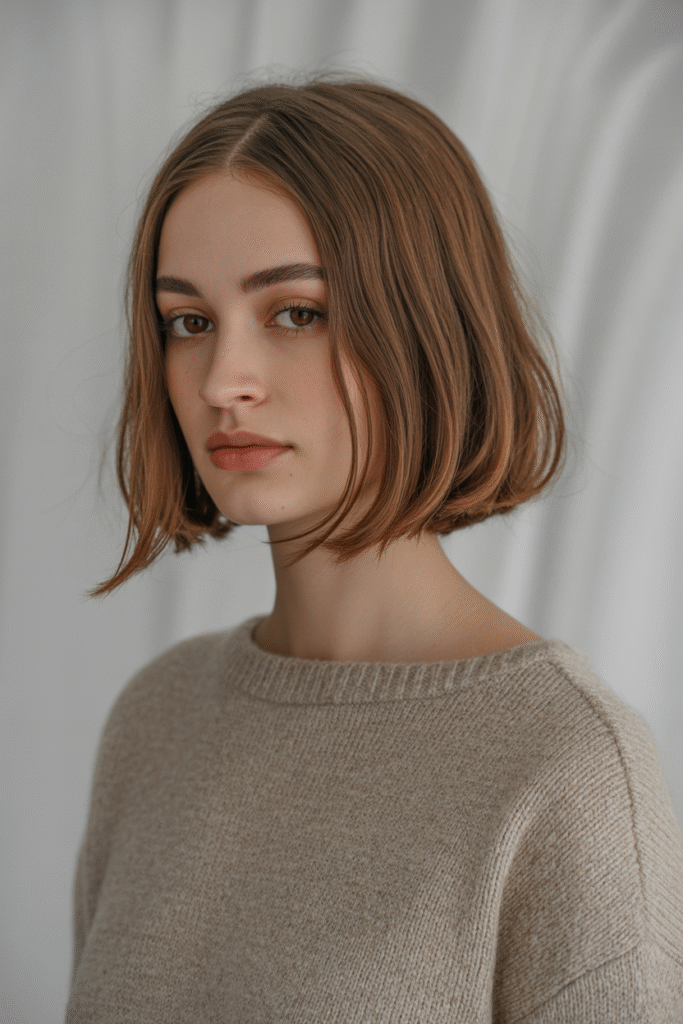
2) Wispy Shag Curtain Bangs
Best for: Round and heart faces; fine to medium hair.
Length & density tips: Keep a light center; piece out the sides with razored ends at the cheekbone.
Style in 3 steps:
- Heat protectant, then a volumizing mousse at roots.
- Blow-dry with a small round brush, flipping ends away.
- Scrunch in a texturizing spray for that airy finish.
Maintenance: Trim every 6–8 weeks; refresh ends with a texture spray between washes.

3) Curly Curtain Fringe
Best for: All face shapes with curls 2B–4A.
Length & density tips: Cut dry on set curls. Center should graze eyebrows when stretched; sides at cheekbone or just below.
Style in 3 steps:
- On damp curls, apply leave-in and a curl cream.
- Diffuse low heat; push hair toward the face, then away at the end.
- Pin the sides back to set the sweep as it cools.
Maintenance: Dust curls every 6–8 weeks. Refresh with water + curl cream mix on day two.
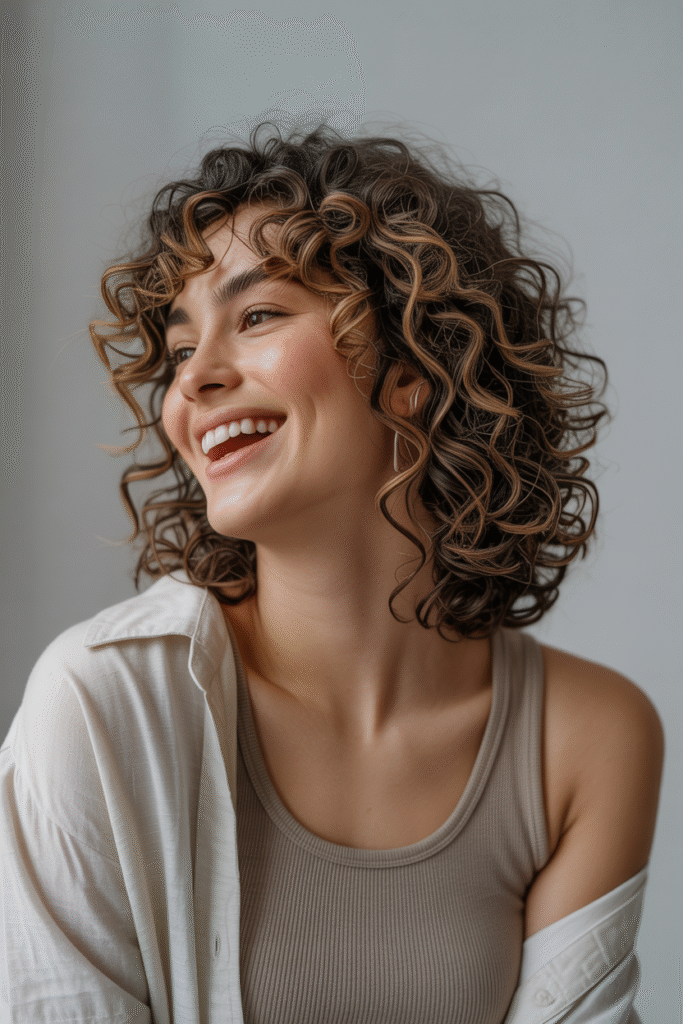
4) Long Layered Curtain Bangs
Best for: Oval and square; straight or wavy, medium to thick.
Length & density tips: Center at lip level; sides blend to collarbone. Keep density medium for flow.
Style in 3 steps:
- Heat protectant; rough-dry.
- Large round brush to bend ends away at chin/collarbone.
- Light serum at tips for shine.
Maintenance: Trim lines every 7–9 weeks; keep the face-frame angles crisp.
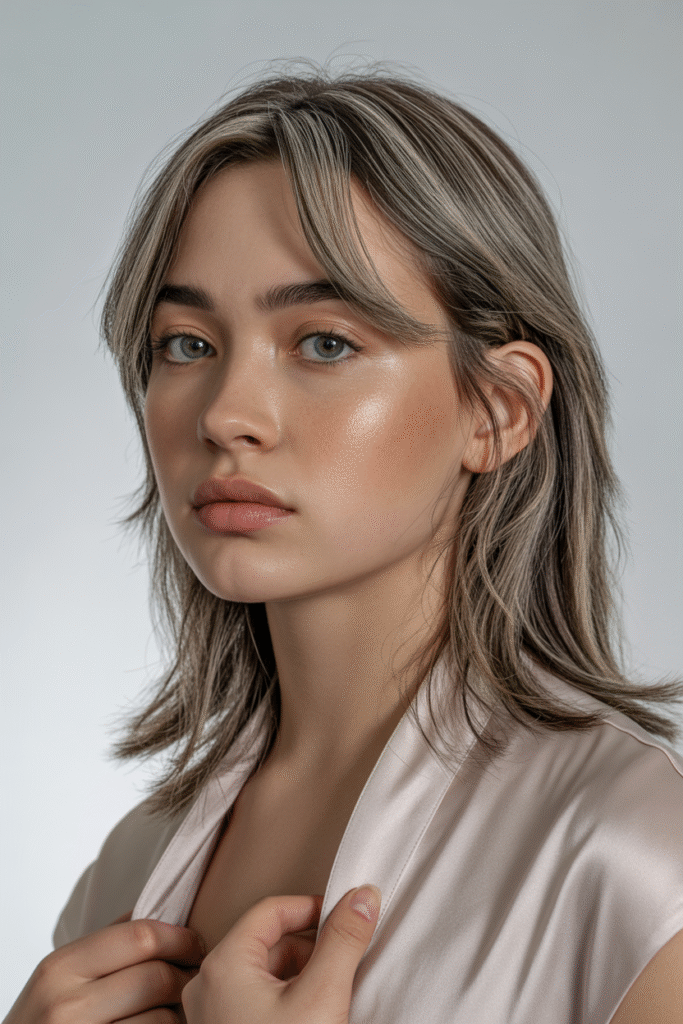
5) Blunt-to-Soft Hybrid
Best for: Square and round faces that want edge without harsh lines.
Length & density tips: A tidier center that softens into feathered sides at cheekbone.
Style in 3 steps:
- Heat protectant; blow-dry with a flat brush to smooth.
- Use a flat iron with a quick C-bend away from the face.
- Set with a light hold spray.
Maintenance: 5–7-week trims to keep the hybrid line clean.
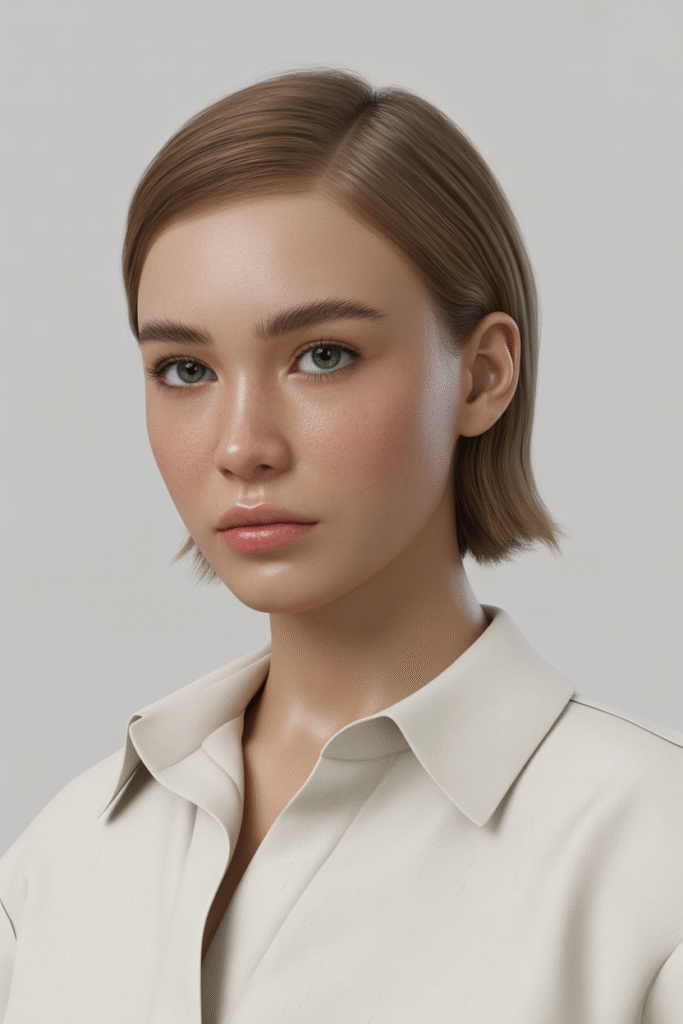
6) Micro-Curtain for Short Cuts
Best for: Pixies, bixies, and short bobs; fine to medium hair.
Length & density tips: Center skims the brows; sides meet the temples. Keep it airy to avoid a helmet feel.
Style in 3 steps:
- Heat protectant; blast dry with fingers.
- Tap a micro-round brush to flip the ends away.
- Finish with a pea of styling cream.
Maintenance: 4–6 weeks; tiny snips keep it tidy.
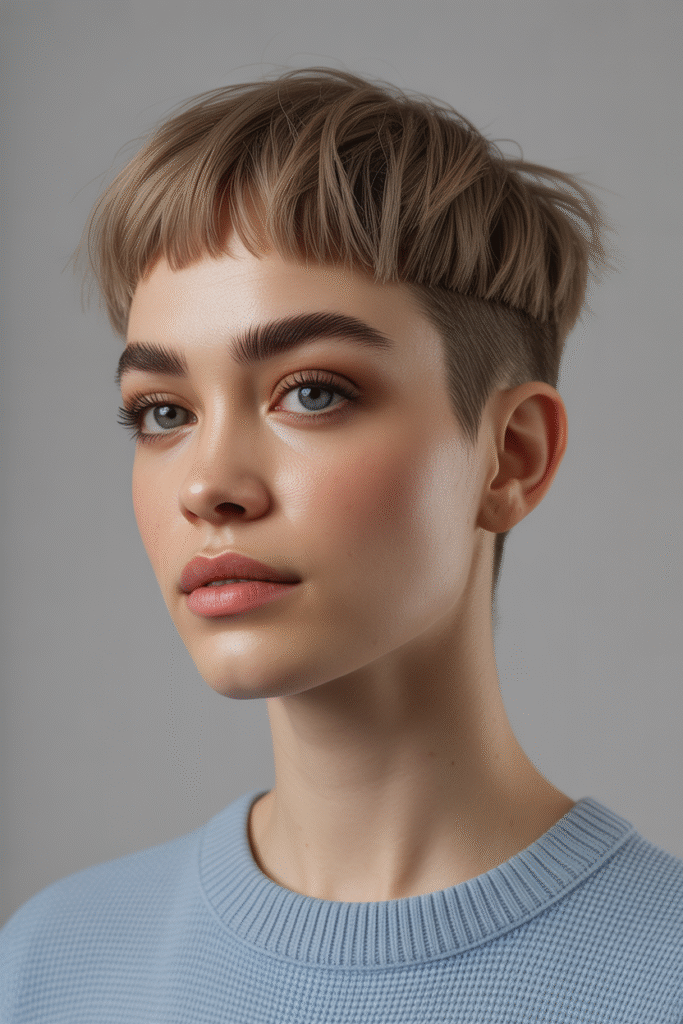
7) Bottleneck Bangs
Best for: Heart and oval; straight to wavy.
Length & density tips: Slight keyhole shape—narrow center, fuller sides. Ends at high cheekbone.
Style in 3 steps:
- Protect, then blow-dry with a small round at the center.
- Switch to medium brush for sides; bend away.
- Add a soft wax to pinch pieces.
Maintenance: 6–8 weeks; clean the “bottleneck” center often.
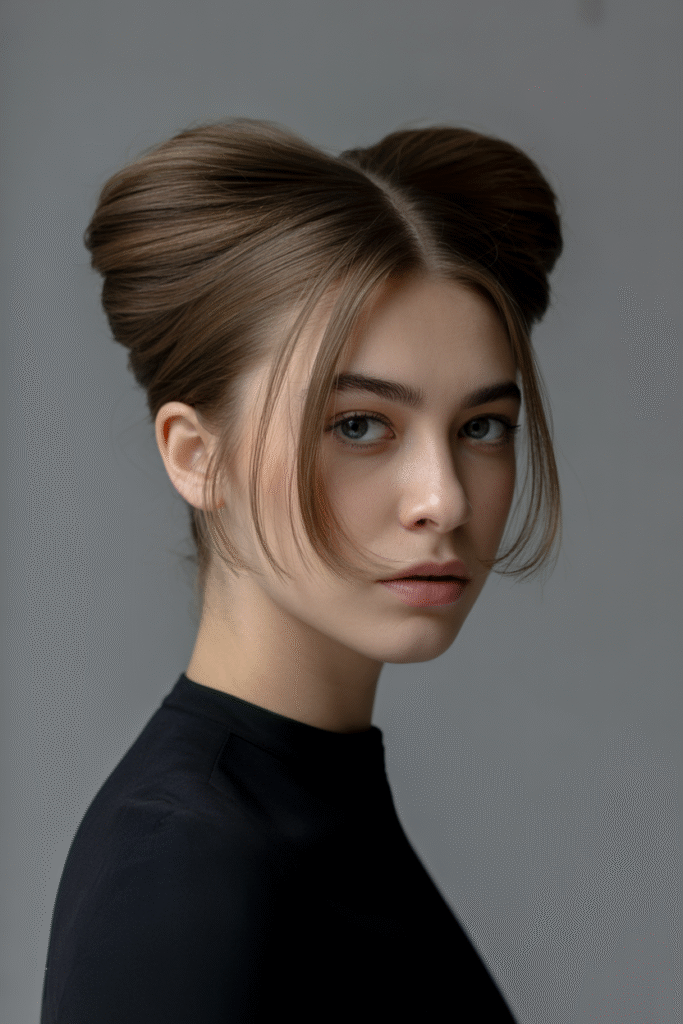
8) Curtain Bangs with a Bob
Best for: Square and heart; fine to thick.
Length & density tips: Ends at mid-cheek with soft texture; pairs well with chin-length bobs.
Style in 3 steps:
- Heat protectant; smooth with a flat brush.
- Use a round brush at cheekbone to curve away.
- Light shine spray.
Maintenance: 5–7 weeks; keep the bob line and fringe synchronized.
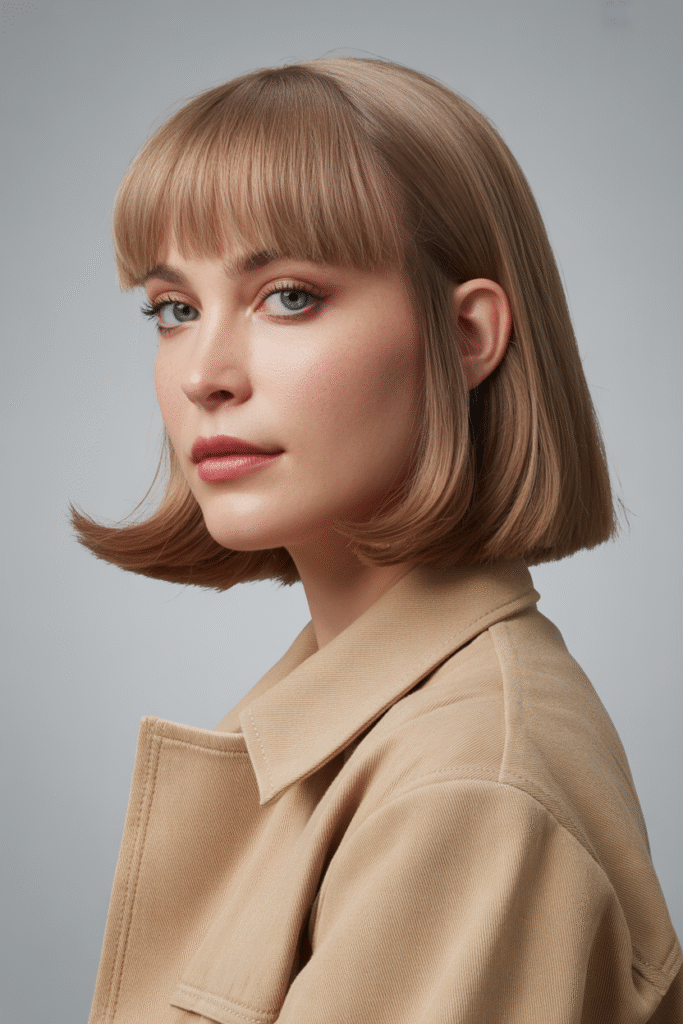
9) Curtain Bangs with a Lob
Best for: Round and oval; medium to thick hair.
Length & density tips: Center at lip level; sides to collarbone to meet the lob.
Style in 3 steps:
- Protect; rough-dry.
- Large round brush; roll ends outward at collarbone.
- Finish with a flexible hairspray.
Maintenance: 6–8 weeks; dust the long face-frame so it doesn’t feel heavy.
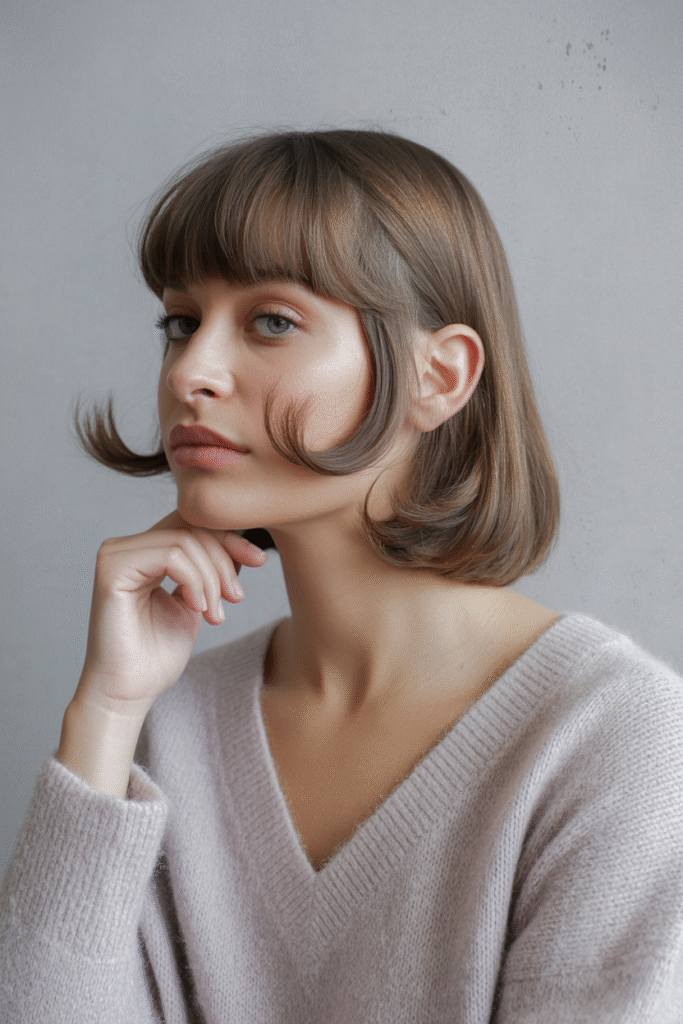
10) Face-Frame Layers + Curtain Fringe
Best for: All face shapes craving movement.
Length & density tips: Blend soft layers that start at the cheekbone; keep fringe light to medium density.
Style in 3 steps:
- Protect; lift roots with a round brush.
- Direct sides away from the face in one smooth pass.
- Mist with a light hold spray.
Maintenance: 6–8 weeks; maintain the shortest face-frame point.
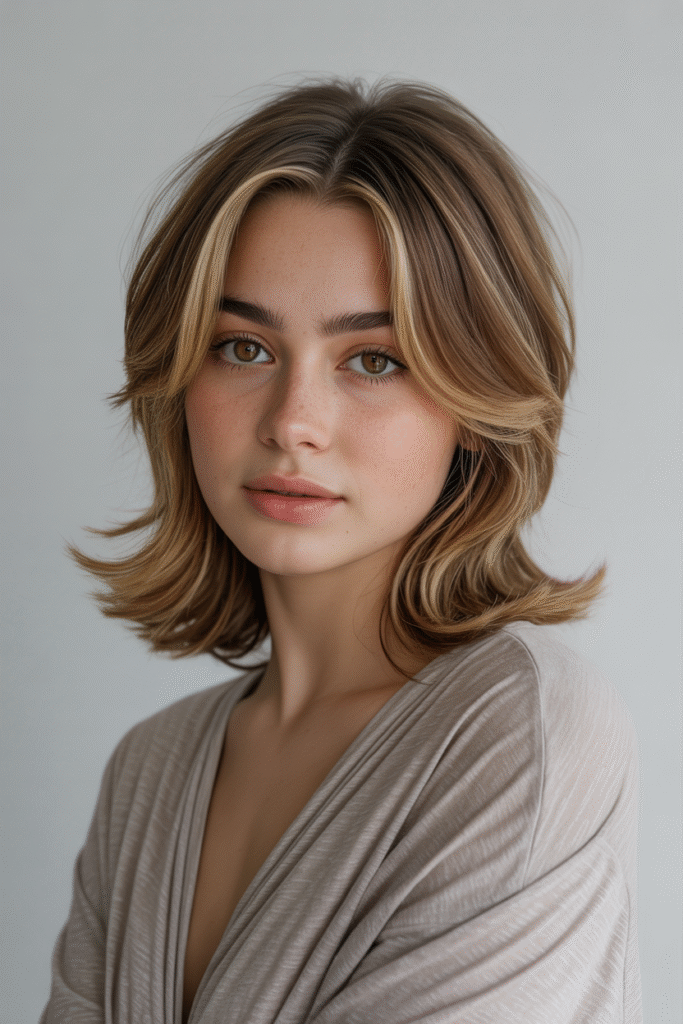
11) Textured Curtain Bangs
Best for: Thick, wavy, or shag cuts.
Length & density tips: Cheekbone ends with internal debulking for swing.
Style in 3 steps:
- Protect; diffuse or blow-dry on low.
- Add texture spray; twist small sections away.
- Break up with fingers.
Maintenance: 6–8 weeks; remove bulk at the roots if it puffs.
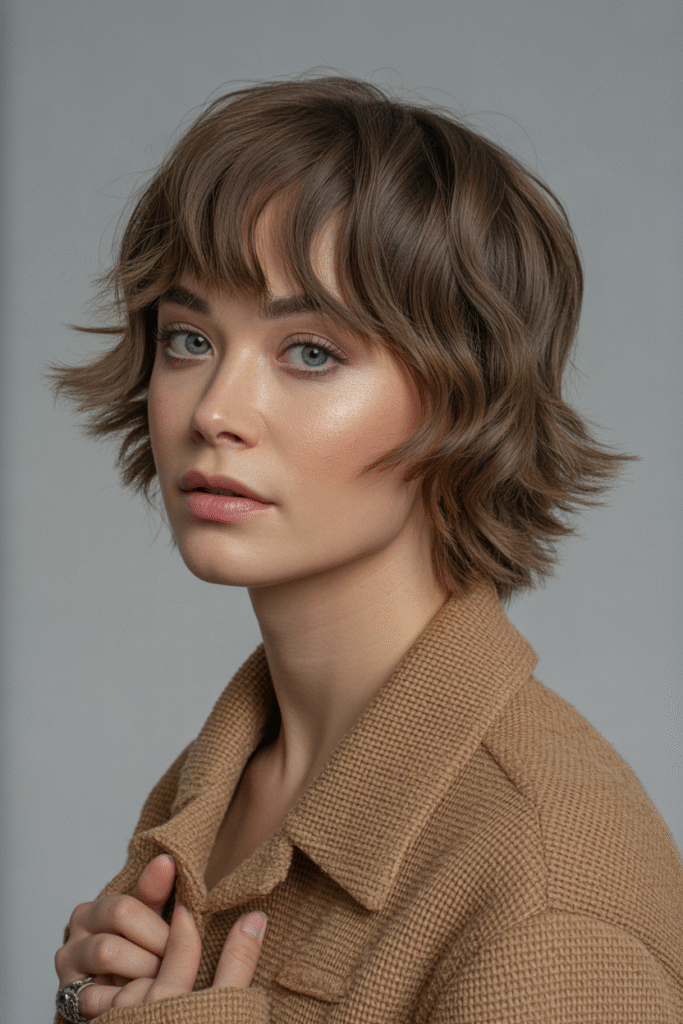
12) Feathered Curtain Bangs
Best for: Straight or fine hair that needs lift.
Length & density tips: Layers within the fringe; ends sit at or just below cheekbone.
Style in 3 steps:
- Protect; apply light mousse.
- Small-to-medium round brush; roll back and let cool in the brush.
- Comb through with fingers.
Maintenance: 5–7 weeks; keep feathering sharp so it doesn’t clump.
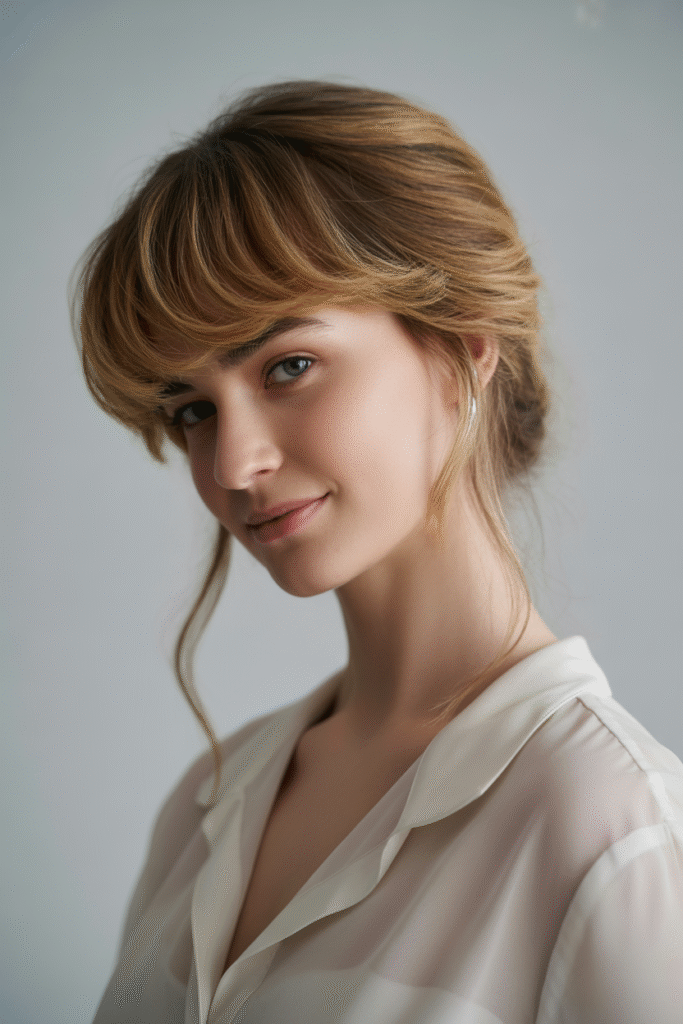
13) Piecey Curtain Bangs
Best for: Any face shape; works on short or long cuts.
Length & density tips: Light density with separated tips; center near the brows, sides at cheekbone.
Style in 3 steps:
- Protect; blow-dry with fingertip tension.
- Tap a flat iron through ends for a brief bend.
- Pinch with a tiny drop of balm or wax.
Maintenance: 5–7 weeks; trim only the ends to preserve the piecey look.
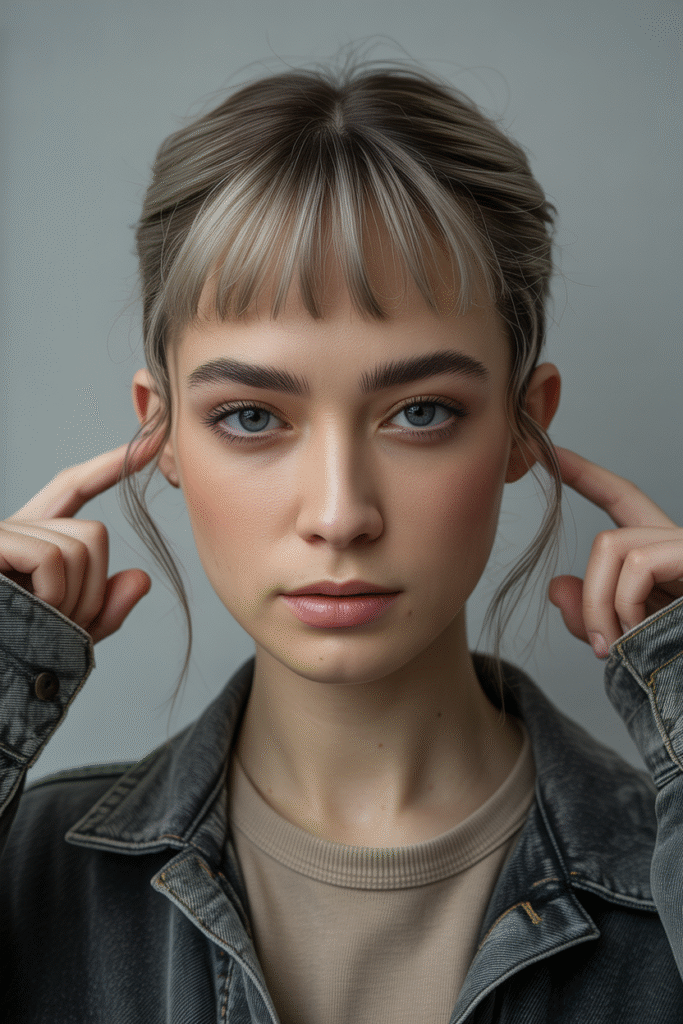
14) Curtain Bangs for Thick Hair
Best for: Square, oval; medium-coarse textures.
Length & density tips: Start longer (lip to chin). Use internal layers to reduce puff.
Style in 3 steps:
- Protect; blow-dry on medium heat with a vent brush.
- Switch to a medium round brush for a controlled sweep.
- Finish with smoothing cream.
Maintenance: 6–8 weeks; remove bulk, not length, to keep movement.
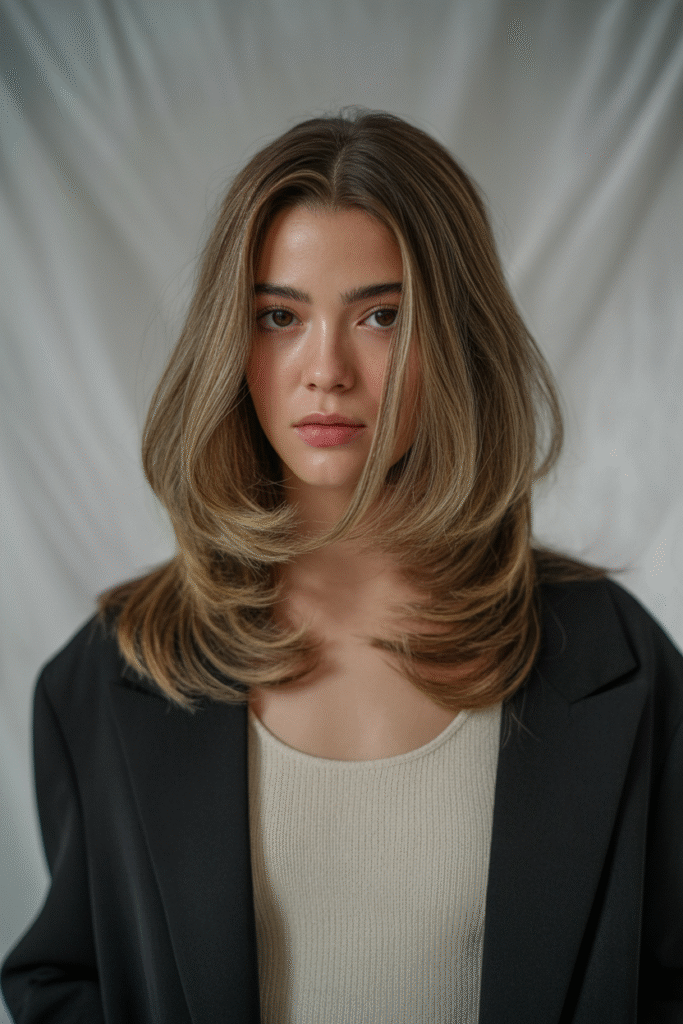
15) Low-Maintenance Curtain Bangs
Best for: Busy schedules; all face shapes and most hair types.
Length & density tips: Keep the shortest point below the brow so growth stays soft. Sides meet the jaw.
Style in 3 steps:
- Protect; rough-dry with hands.
- Roll a large round brush once at the cheekbone and cool.
- Use a flexible spray or leave-in for slip.
Maintenance: 7–9 weeks; in between, clip the sides back while you shower to “reset” the curve.
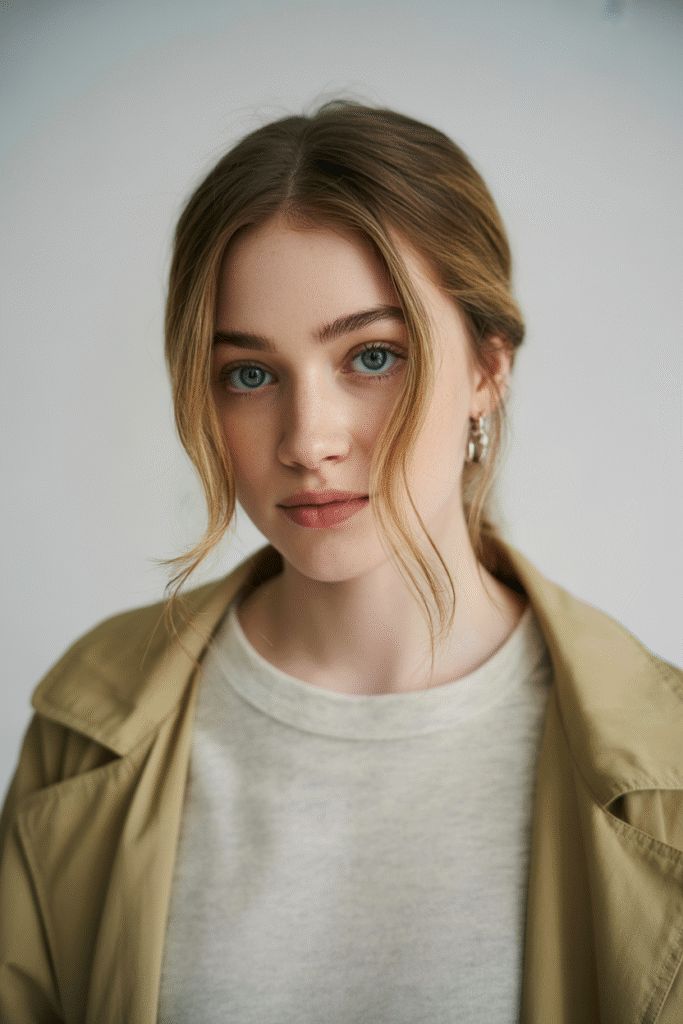
At-Home Styling Guide
Tools & Products
- Round brush (small for short fringes; medium for most; large for long).
- Blow dryer with nozzle.
- Flat iron (optional for a quick bend).
- Light hairspray or texture spray.
- Smoothing serum or cream.
Everyday Styling (3–6 quick steps)
- Towel-blot gently; hair is fragile when wet. Use a wide-tooth comb.
- Apply a heat protectant evenly.
- Blow-dry to 70% with fingers, directing hair forward.
- Switch to a round brush; roll back and away at the cheekbones.
- Cool each section in the brush for shape memory.
- Finish with a light spray; smooth the ends with a tiny serum drop.
Quick Fixes
- Cowlick at the part: Wet just the roots, then blow-dry in the opposite direction for 10–15 seconds and flip back.
- Excess volume: Brush bangs down while cooling, then bend only the last inch away.
- Limp bangs: Add dry shampoo at the roots; hit with warm air and lift with your fingers.
- Second-day refresh: Mist with water + leave-in, then re-bend ends with a quick blow-dry pass.
Salon Consultation and Maintenance
Tell your stylist:
- Where you want the shortest point to land (brow, bridge, or lip).
- Where the sides should end (cheekbone, jaw, collarbone).
- Your parting habits (center, off-center, cowlicks).
- Density preference (airy, medium, or full).
Trim cadence: Most people book every 4–8 weeks based on growth rate. Signs you need a touch-up: ends bunch into one piece, roots feel puffy, or the sweep loses shape.
Color pairings: Subtle face-frame highlights, a soft money piece, or sun-kissed balayage will emphasize the curve. In sunny seasons, UV and heat can dry and weaken hair, which makes styles less likely to hold a curl; shield with hats and UV-filter products.
Common Mistakes & Easy Fixes
- Starting too short: Hair springs up as it dries, especially wavy and curly types. Start longer; you can always take more off.
- Cutting wet without accounting for spring: For curls and waves, trim dry or at least check dry after the first snip.
- Skipping heat protectant: Damage builds and reduces shine and hold. Use a protectant and keep heat moderate.
- Wrong brush size: Small brushes give tight bends; large brushes give loose swoops. Match brush to length.
- Rough towel-drying: Pat or wrap instead of rubbing to limit breakage and frizz.
FAQs
Will curtain bangs work on curly hair?
Yes. Keep the center a touch longer and cut on dry, set curls so you see the real spring. Style with a curl cream, then diffuse on low. Pin the sides back while they cool to set the curtain shape.
How often should I trim them?
Plan for every 4–8 weeks. Shorter fringes need closer to four. Longer, blended versions can stretch to eight or nine. If ends clump together or the sweep won’t sit, it’s time.
How do I style them in humidity?
Use a light mousse at the roots and a silicone-free serum on the ends. Blow-dry the shape fully, cool it in place, then mist a flexible hairspray. A quick clip at the temple while you do makeup helps set the bend.
Can I grow them out without an awkward phase?
Yes. As they lengthen, ask for soft face-frame layers that start just below the cheekbone. Keep trimming only the very tips so they blend into your cut. Use a large round brush for a looser swoop.
Ready to try one of these 15 Face Framing Curtain Bangs? Bring this guide to a licensed stylist and ask for the length landmarks that match your face and hair. A few precise snips can change your whole look fast.

